Kerala’s monsoon has a charm that’s unmatched—rains that cleanse the soul, winds that whisper ancient stories, and streets that come alive in their soaked beauty. Even though the monsoon arrived with intensity this year, it’s already mellowing down, revealing the romantic side of Kerala rains. As someone deeply involved in tourism marketing, I felt the best way to promote this unique experience was to live it—and share it.
So, on a rainy morning, I set off with my wife and a few members of our team to Fort Kochi and Mattanchery, not just for reels and photos, but to truly understand the place. Though we’ve all seen Kochi before, this time we went in with curiosity and the help of a professional tour guide—Mr. Shine—who opened our eyes to the rich, layered history hidden behind Fort Kochi’s colonial walls and monsoon-drenched streets.
A Morning at Fort Kochi
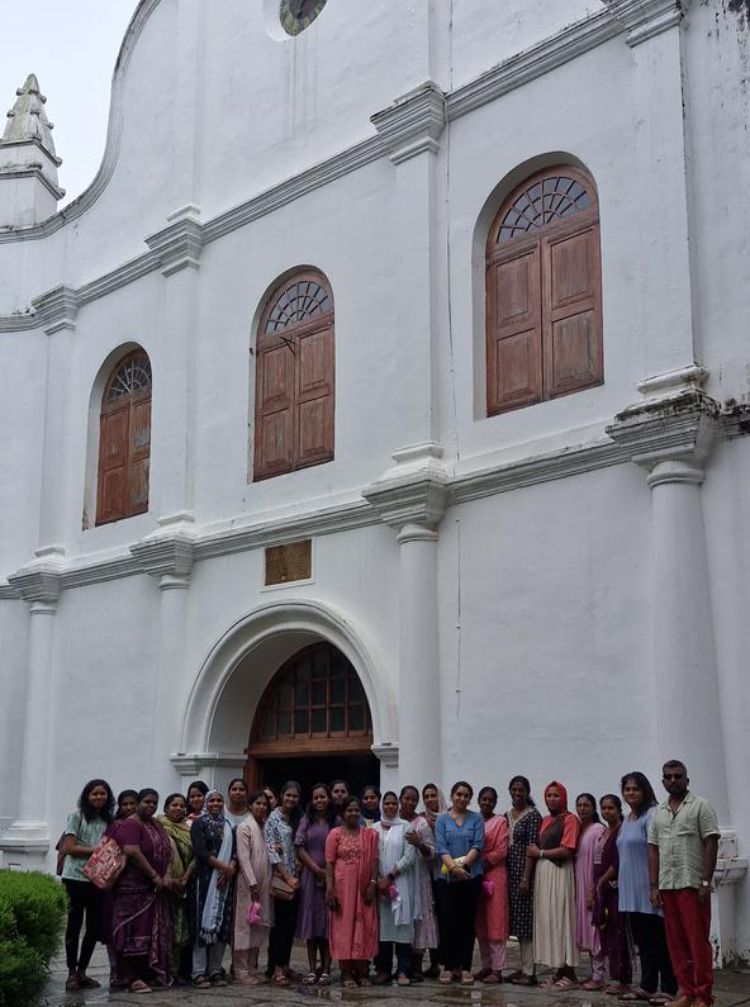
We left our office by 9:00 AM and reached Fort Kochi by 10:00 AM.
The rain had just slowed down, and a light drizzle set the perfect backdrop as we met Shine at St. Francis Church, India’s oldest European church, originally built in 1503by Portuguese Franciscan friars.
Why is Kerala called Malabar?
Our guide began by explaining how the term Malabar—once used by Arabs and Europeans—referred to the coastal region of Kerala. This region was a flourishing trade hub known for its spices, drawing explorers, colonizers, and merchants for centuries.
St. Francis Church: Where Vasco da Gama Rested
St. Francis Church has seen multiple colonial transitions.
Initially constructed by the Portuguese, it was taken over and rebuilt by the Dutch in 1663 and later came under British control.
The structure we see today has a blend of Portuguese simplicity and Dutch architectural refinement.
One fascinating story Shine shared was about Vasco da Gama, the Portuguese explorer who died in Kochi on December 24, 1524.
He was initially buried inside this church.
After 14 years, his remains were taken back to Portugal, but the gravestone still lies within the church—an enduring reminder of Kochi’s global links.
We also learned:
- The Great Fire of Cochin once caused massive destruction in the area.
- Protestant mass happens only on Sundays. The interior’s wooden balcony, old tile roof, and manually operated swing fan system (punkahs) reflect a bygone era.
- The floor is laid with beautiful Portuguese tiles, each with different floral designs, imported during the early colonial period.
Chinese Fishing Nets & The British Watchpoint
Next, we walked to the famous Chinese Fishing Nets, symbols of Kochi’s multicultural past.
These nets, introduced by Chinese explorer Zheng He in the 14th century, operate with a unique cantilever mechanism.
We were even allowed to step onto one and experience how it works.
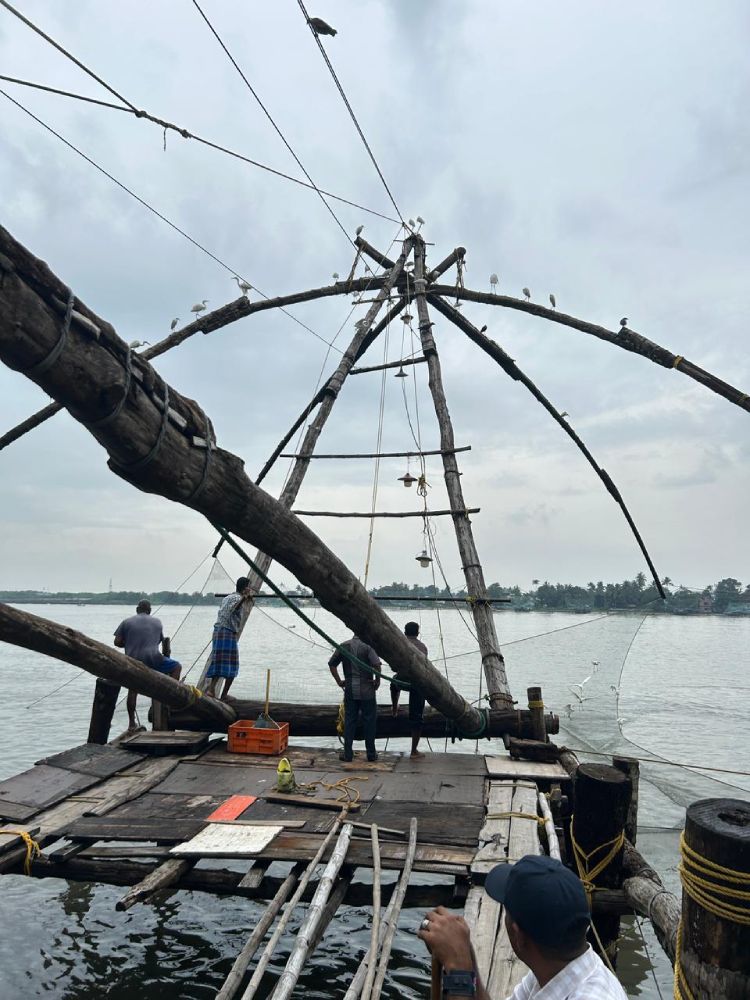
Before reaching the nets, we paused under an enormous banyan tree, where Shine pointed out a British-built steel watch structure from which soldiers would monitor for approaching enemy ships.
The steel, he explained, came from the Sheffield factories in England and was installed in the late 1800s.
Onward to Mattanchery – 3 km of Historical Depth
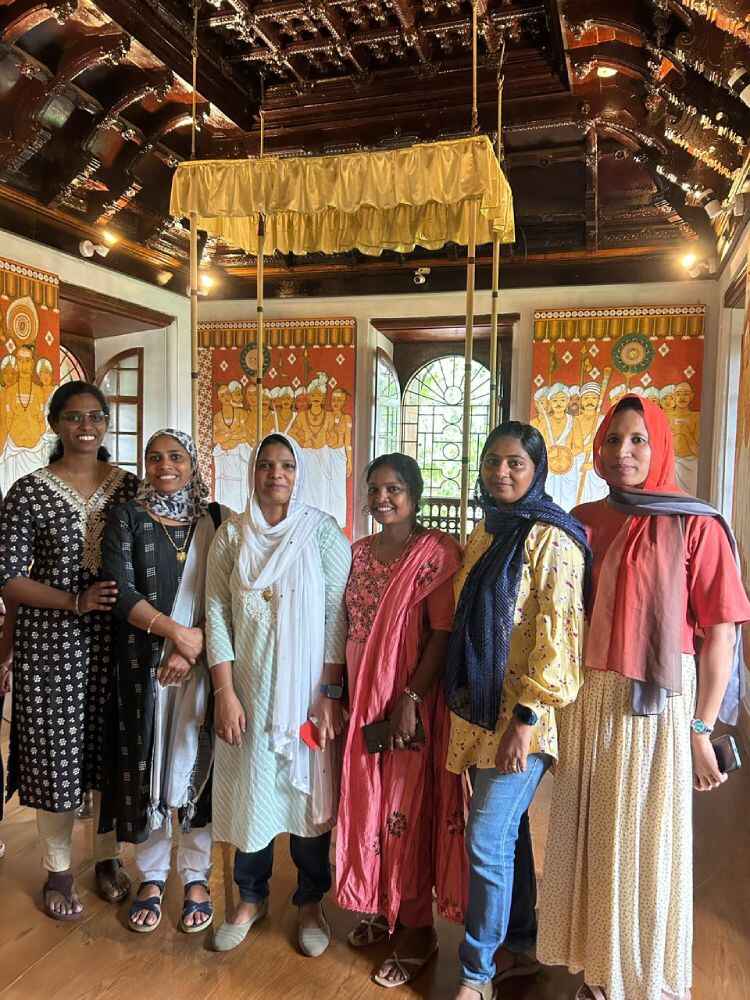
Dutch Palace (Mattanchery Palace)
Built by the Portuguese in 1555 and later renovated by the Dutch in 1663, the Mattanchery Palace was a gift to the Raja of Kochi. Inside, the palace amazed us with:
Murals depicting Ramayana stories and Kerala’s royal traditions
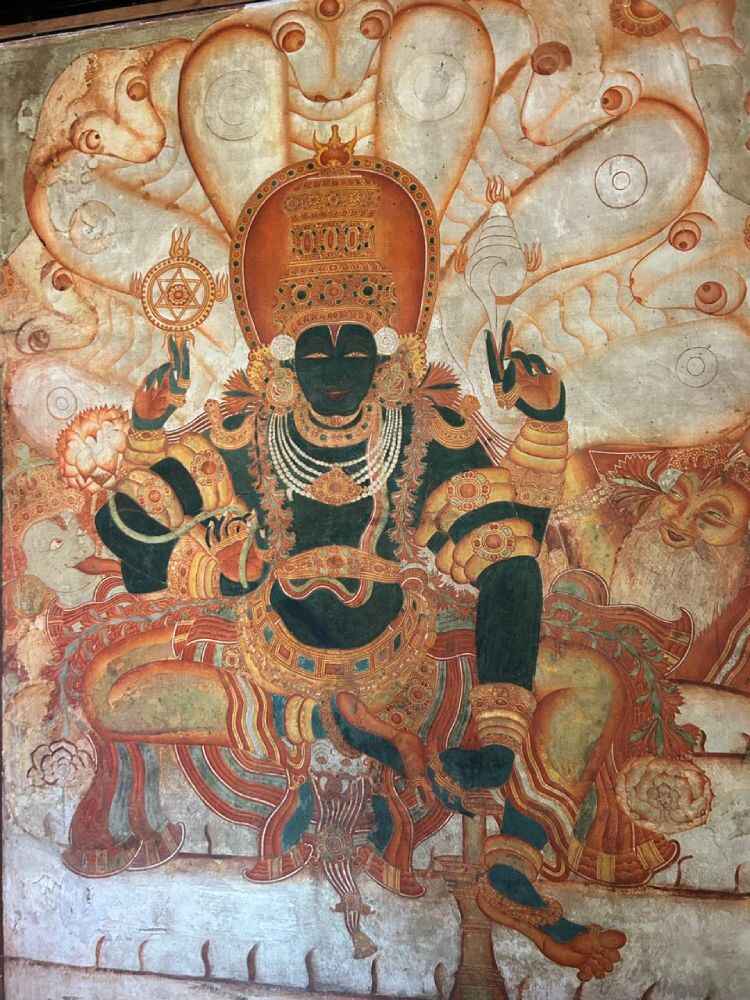
The King’s swing, used during festivals and public meetings
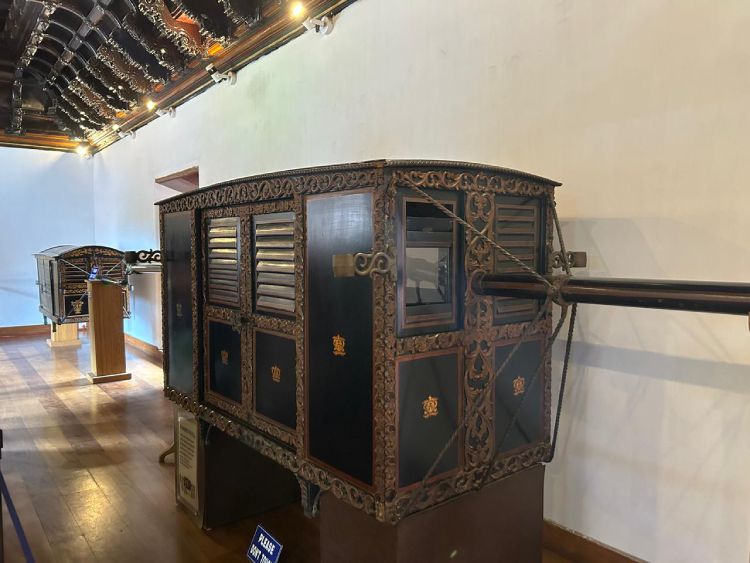
Three temples inside the palace premises—dedicated to Pazhayannur Bhagavathy, Shiva, and Krishna
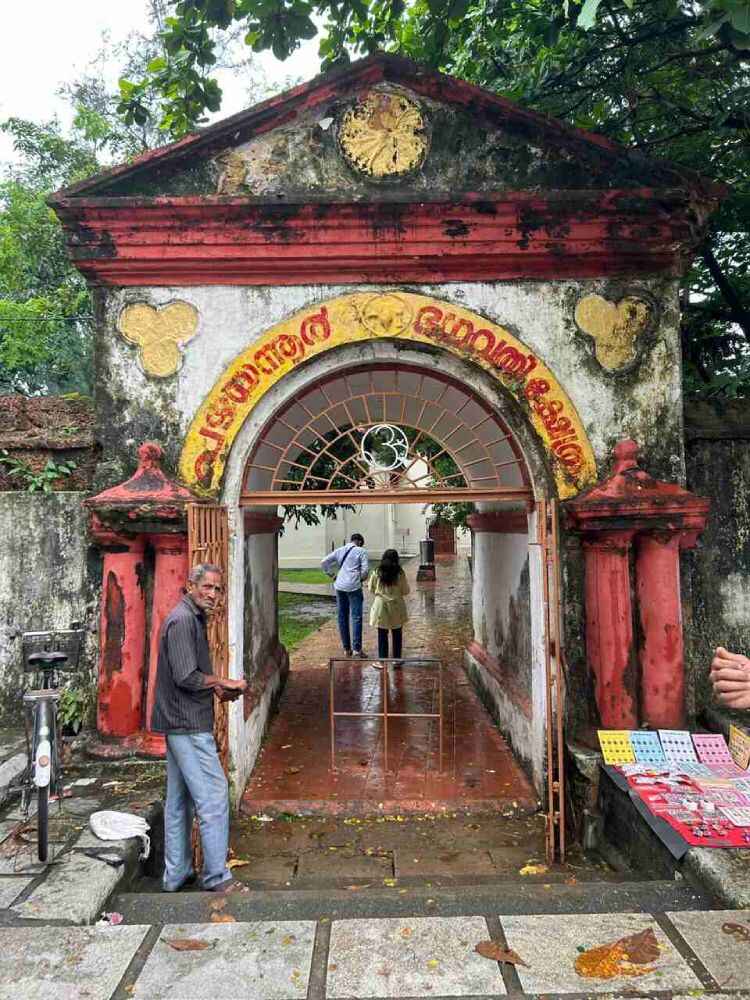
Shine described how the Dutch, despite being Protestant, respected local traditions and continued the palace's function as a seat of the Hindu kingdom under colonial supervision.
Jewish Legacy in Kochi
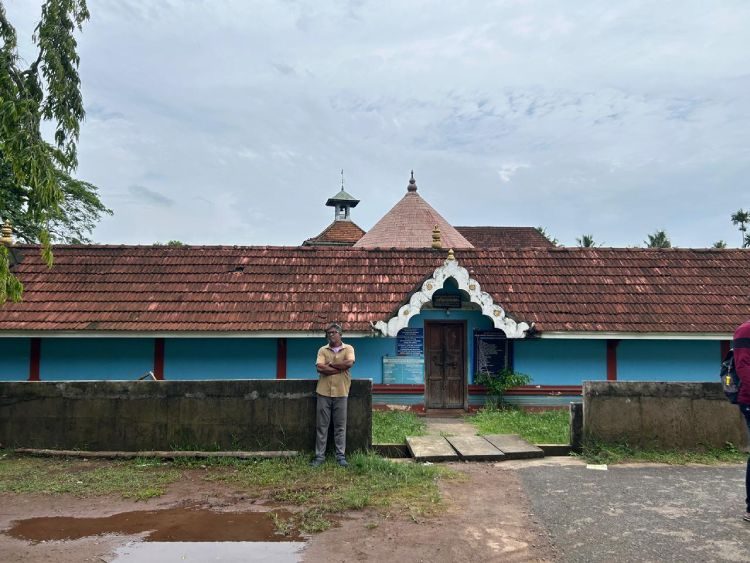
We then walked to the Paradesi Synagogue, which was unfortunately closed due to it being Saturday (Sabbath).
Still, from the outside, the white walls and tall clock tower told tales of a community that shaped Kochi's identity.
- In the 1500s, the Maharaja of Kochi gifted this land to the Jews fleeing persecution in Europe and the Middle East.
- "Jew Town", where the synagogue stands, was once home to a thriving Jewish population.
- There were originally two synagogues—White (Paradesi) for the European Jews and Black Synagogue for the local Malabari Jews.
- Post-1948, after the formation of Israel, most Jews migrated back, though a few families stayed back until the late 20th century.
Jew Street Walk & Lunch at Abad Chullickal
After a sumptuous lunch at Abad Chullickal, we returned to Jew Street for a slow, reflective walk.
This street is a paradise for antique lovers, lined with spice shops, heritage cafés, and old-world buildings.
The aroma of cardamom and cinnamon lingered in the monsoon air, and we couldn’t help but imagine the days when merchants and rabbis walked the same cobblestone paths.
A Monsoon That Tells Stories
What began as a promotional monsoon outing turned into a journey of rediscovery.
We realized how little we knew about the city we’ve lived in and loved.
The rain, far from being a hindrance, enhanced the charm—cool air, glistening streets, and a sense of nostalgia that only monsoon can bring.
To anyone visiting Kerala this monsoon—don’t just pass through Fort Kochi. Hire a guide, take a walk, and let the rains wash over centuries of stories.
Tips for Monsoon Visitors to Fort Kochi & Mattanchery
- Best time: Post-heavy showers, mid-June to August for romantic drizzles.
- Carry: Umbrella, waterproof footwear, a poncho, and a fully charged phone for photos.
- Don’t miss: St. Francis Church, Chinese Fishing Nets, Dutch Palace, Jew Street, and a walk through spice-scented lanes.
- Travel tip: Hire a licensed guide to enrich your experience. Ours, Mr. Shine, made all the difference.
Kerala Monsoon isn’t just about rain—it's about stories, spice, sea, and soul.
Come, explore it like never before.